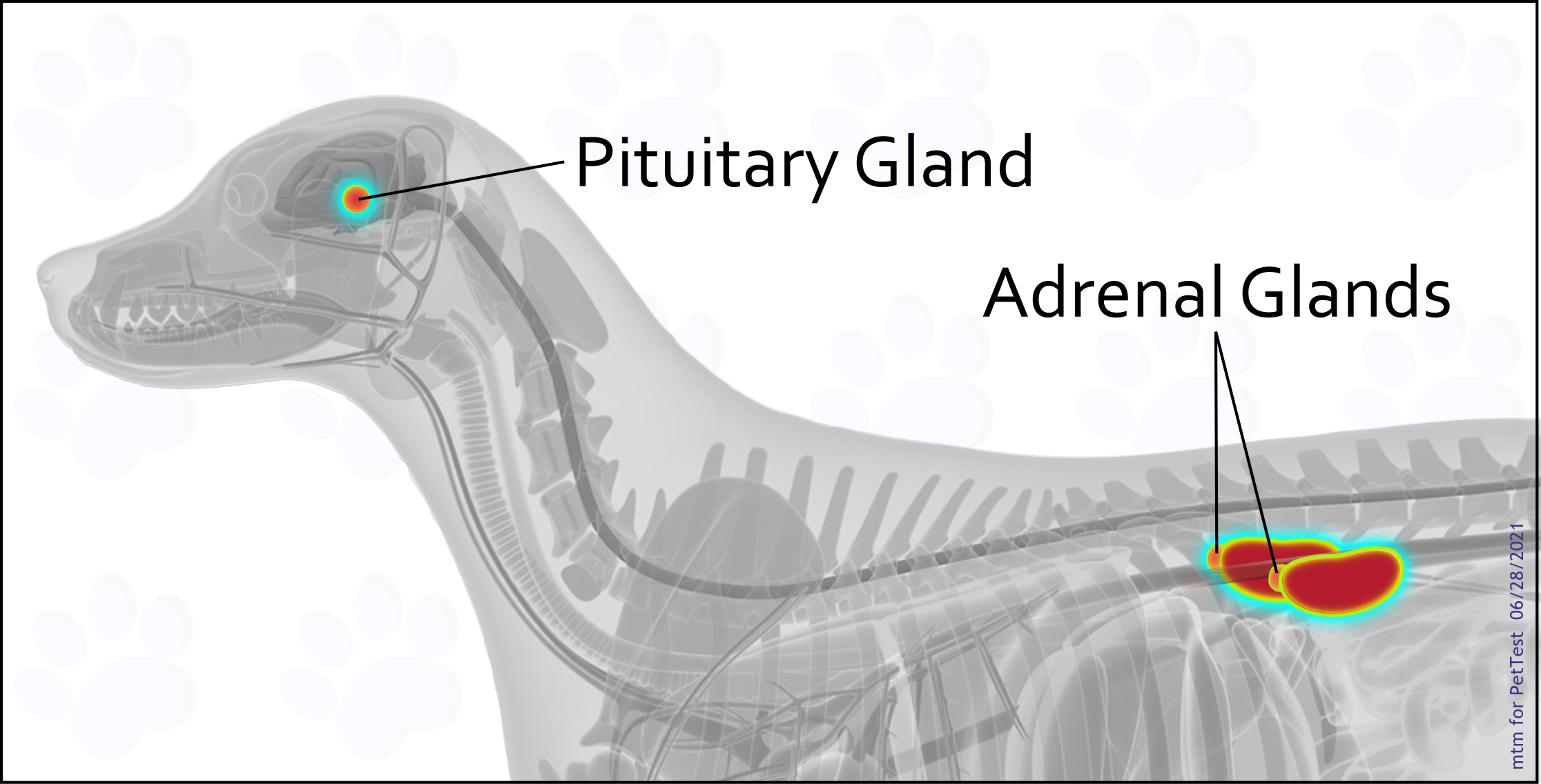What is Cushing's Disease (Hyperadrenocorticism)
Being in a diabetic dog group we often see dogs that have both diabetes and Cushing’s Disease. Cushing’s symptoms can mimic diabetes and Cushing’s can make regulation almost impossible until medication is given to control Cushing’s Disease. I want to look at Cushing’s Disease today, so grab a cup of your favorite caffeinated beverage and let’s get to it!
The endocrine system is responsible for producing hormones. Hormones regulate metabolism, development and growth, reproduction, tissue and sexual function and sleep.
The endocrine system is made up of endocrine glands and organs that excrete hormones to regulate the body. The following are part of the endocrine system:
- Hypothalamus
- Thymus
- Pineal Body
- Pituitary Gland
- Adrenal Glands
- Thyroid Gland
- Parathyroid Glands
- Pancreas
- Ovaries and Testicles
Cortisol is a hormone that is produced by the adrenal glands and has many functions:
- Boosts energy to handle stress
- Regulates metabolism
- Regulates immune responses
- Controls sleep/wake cycle
- Reduces inflammation
- Regulates blood pressure
Cushing’s Disease (Hyperadrenocorticism [HAC]) is caused by the adrenal glands producing too much cortisol. There are two forms of Cushing’s disease:
Pituitary dependent (PDH) is the most common type of Cushing’s Disease and is caused by a tumor in the pituitary gland. The tumor in the pituitary gland triggers overproduction of the adrenocorticotropic hormone (ACTH) that stimulates the adrenal glands to produce excess cortisol.
Adrenal dependent (ADH) Cushing’s is due to a tumor in either one or both adrenal glands. The tumor or tumors cause overproduction of cortisol.

Symptoms of Cushing’s Disease:
- Frequent urination
- Excess thirst
- Excessive panting
- Increased appetite
- Reduced energy levels
- Pot belly
- Hair loss
- Thinning of skin
- Muscle wastage
- Skin infections
Diabetic dogs with symptoms above and on a high dose of insulin for their body weight should be tested for Cushing’s Disease. Dosage of 1 unit per kg. per dose with no blood glucose control, or insulin dose of 1.5 unit per kg. does not bring blood glucose levels below 300 mg/dL (16.66 mmol/L) are considered to be insulin resistant.
Diagnosis of Cushing’s Disease requires specific bloodwork and urinalysis. Low dose dexamethasone suppression test (LDDST), urine cortisol: creatinine ratio, and the ACTH (adrenocorticotropic hormone) stimulation test are used to diagnose Cushing’s Disease. The ACTH stim test is the recommended test for a diabetic dog. Treatment for Cushing’s Disease require medications to reduce cortisol levels commonly used are Vetoryl (trilostane) and Lysodren (mitotane). Surgery may also an option to remove the tumor/s.
Atypical Cushing’s Disease – this type of Cushing’s is less common, and instead of cortisol levels being elevated, sex hormones are higher. ACTH test and LDDST will show that cortisol levels are normal. An extended adrenal panel is necessary to diagnose atypical Cushing’s Disease. Treatment for atypical Cushing’s Disease is a bit different since cortisol levels are not high. Lignans and melatonin are a natural, holistic method of treating atypical Cushing’s. Vetoryl should not be given to atypical dogs because it can cause Addison’s crisis (hypocorticism).
Please note that if your dog is diabetic, melatonin can affect blood glucose levels because it is a hormone. Blood glucose levels should be monitored when giving melatonin.
I hope this overview of Cushing’s Disease has been informative and you have a better understanding of the disease!
If you want to read more about insulin resistance, please click here for last week’s blog.
Until next week, stay cool and caffeinated!
Do you have a suggestion or comment? Please start a conversation below.
If you are looking for a Facebook community to join for support, I have been an admin in Diabetic Dog Owners for four and a half years. You can also join Canine Diabetes Support and Information on Facebook as well.
For more conversations, photos, and giveaways check out PetTest on Facebook and Instagram.
Click here for a printable version of this blog.

